How to Strip Paint With a Heat Gun
Without the mess of chemical strippers or the expense of professional paint stripping services, heat guns work well to strip away layers of old paint. Whether you’re restoring an antique piece or renovating the inside of your home, the process can be challenging.
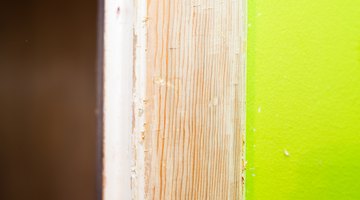
Because homes built before 1978 and painted antiques may contain lead, the stripping process can be dangerous and pose a health risk. Before you attempt to remove old paint with a heat gun, perform a lead test. If lead is detected, the EPA strongly recommends you hire a professional.
Things You Will Need
- Utility knife
- Lead test kit
- Plastic baggie
- Permanent marker
- Drop cloth
- Work gloves
- Protective clothing
- Safety glasses
- Respirator mask
- Heat gun nozzles
- Putty knife
- Paint scraper with a triangular blade (optional)
- Old metal can
- Paint scraper
- Mineral spirits
- Clean rag
Lead Test Options
-
Remove a 3-inch square section of paint from the area or object you plan to strip with a utility knife. If there are several layers of paint, be sure this section includes the initial, innermost layer. Open a lead test kit and follow the instructions to see if the paint contains lead.
-
Scrape a tablespoon-sized area of paint -- include all layers -- into a plastic baggie, as an alternative. Seal the baggie and label it with a permanent marker. Indicate the location of where the paint was taken. For example, write bedroom window frame or antique armoire. Send it to an accredited laboratory for testing.
-
Set up an appointment with a state-certified inspector/assessor if you are stripping paint from an older home. Have him inspect your property and write up an assessment report indicating if any lead was detected and if so, if the level is hazardous.
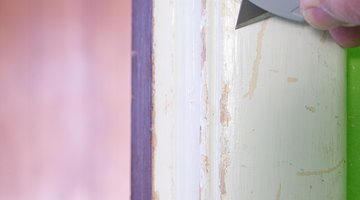
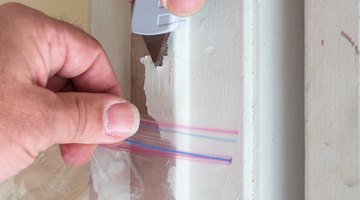

Prep and Strip
-
Move the object you plan to strip outdoors or to a work space such as your garage. If you are stripping paint off a door, remove it from the hinges. If you are removing paint from the interior of your home, remove all furnishings near the work area and protect the flooring with drop cloths.
-
Put on safety gear -- work gloves, protective clothing, safety glasses and a respirator mask specifically designed to be used with heat guns. Attach the appropriate nozzle to your heat gun. Use a flared nozzle for flat surfaces and a conical nozzle for grooved, narrow or detailed areas. Plug in the gun and allow it to heat up.
-
Hold the gun about 3 inches away from the painted surface with your non-dominant hand and a scraper in your other hand. If there are grooved, detailed areas, work on them first, otherwise start on a flat area. Slowly move the gun back and forth until the paint begins to blister and bubble. Avoid holding the gun in one place too long as this could damage the wood and create fumes.
-
Remove the paint from detailed areas with a triangular-blade paint scraper. On flat surfaces, use a putty knife like a plow to push and scrape the paint off the wood. Avoid gouging the wood and discard the paint in an old metal can. When the paint in one area has been removed, move to the next and repeat.
-
Examine your work after most of the paint has been removed. Take a regular paint scraper and scrape off any stubborn paint flecks. Allow the wood to cool, and then wipe it down with mineral spirits and a clean rag.

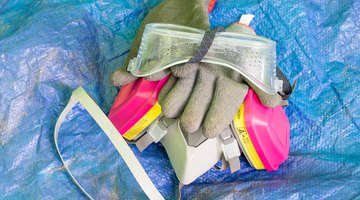

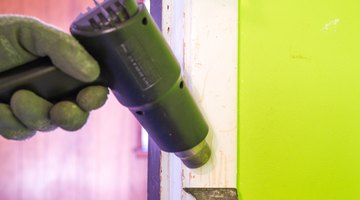
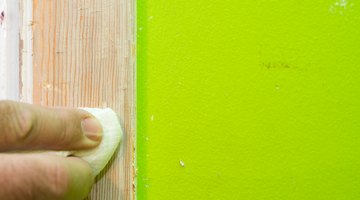
Tip
Work slowly, one small area at a time. Work in a well-ventilated area. Keep a fully charged fire extinguisher nearby.
Warning
Using a heat gun on or near windows can crack the glass. Monitor the heat setting and gun position carefully, and use a manufacturer-recommended heat shield to protect the glass. To be safe, do not use a heat gun if the glass can't easily be replaced, as cracking may be unavoidable. Never store the gun away while it is hot.
The Drip Cap
- Without the mess of chemical strippers or the expense of professional paint stripping services, heat guns work well to strip away layers of old paint.
- Whether you’re restoring an antique piece or renovating the inside of your home, the process can be challenging.
- Before you attempt to remove old paint with a heat gun, perform a lead test.
- Seal the baggie and label it with a permanent marker.
- Indicate the location of where the paint was taken.
- If there are grooved, detailed areas, work on them first, otherwise start on a flat area.
- Slowly move the gun back and forth until the paint begins to blister and bubble.
References
Resources
Photo Credits
- Jens Lambert/Demand Media
- Jens Lambert/Demand Media
- Jens Lambert/Demand Media
- Jens Lambert/Demand Media
- Jens Lambert/Demand Media
- Jens Lambert/Demand Media
- Jens Lambert/Demand Media
- Jens Lambert/Demand Media
- Jens Lambert/Demand Media
- Jens Lambert/Demand Media
More Articles



